The National Custom and Self Build Association (NaCSBA) has released its final analysis of the practice around local authorities and their activity. The data follows its initial announcement of the early data, released in January, that revealed that councils were restricting people from signing the Right to Build registers with a series of “dirty tricks”.
The final analysis reflects the most complete set of data NaCSBA has had access to to date, which represents a 97% response, based on responses from 317 of the 327 planning authorities in England. The overall number of authorities has decreased by 9 than 2018, due to merged authorities.
Extrapolating this data to reflect the situation across England, NaCSBA estimates that the number of new individual entries on registers to be 11,420.
This is 5% more than the 10,878, with individual entries up by 8%, while group entries are down. This is the first year-on-year increase we have seen since the registers were launched and a welcome increase against 2018. This is especially so in light of the increasing barriers to joining registers, which are suppressing demand.
NaCSBA also estimates that the overall numbers on the registers is now at 45,655. This is up by 8,499 from the 37,156 last year but is considerably less than the 11,420 new additions.
This will be largely due to the removal of existing entries from registers – a practice that NaCSBA does not accept. The cumulative impact of these changes has been to remove over 9,000 entries from registers. Without such actions it estimates the totals on registers would be over 55,000 by now
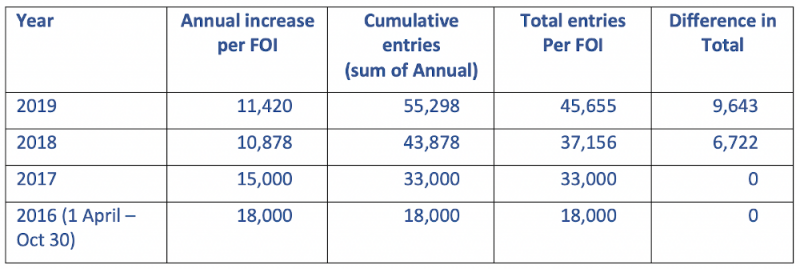
In addition the data demonstrated that:
Andrew Baddeley-Chappell, NaCSBA CEO commented, “The wider picture that is emerging of local authority activity with regards the Right to Build suggests that the 30 October 2019 deadline appears to be driving activity by some local authorities to manage registers down rather than manage delivery up.
“However, outside the registers the picture does appear more positive, as self and custom build becomes referenced in more local plans, but there is much still to do”.
NaCSBA is calling on Government to act before bad practice becomes too embedded. This is especially important because the multi-year process means that there is already a large amount of manipulated information within the system already. This needs to be addressed, or allowed to work its way through.
Right to Build legislation requires all planning authorities in England (including National Parks) to maintain a register of individuals and groups seeking to acquire land on which to build their home.
Entries onto the register are recorded in annual base periods ending 30 October each year. Local authorities have 3 years after the end of the base period to provide sufficient suitable development permissions.
The first (shortened) base period ran from 1 April 2016 to 30 October 2016 meaning the obligation must have been met by permissions granted between 31 October 2016 and 30 October 2019.
NaCSBA urges anyone wanting to build, including groups, to sign up to use the registers, as they remain a crucial route of evidencing demand to local authorities.
The last few plots are available at Ssassy Property’s Springfield Meadows development in Southmoor, offering a low-carbon opportunity to custom build your own home. The development in Oxfordshire is made up of 25 homes, with 15 sold, seven reserved and the last few homes available for purchase.
The homes are being built using Greencore Construction’s Biond System, an offsite timber frame method that uses a hemp-lime, which is capable of delivering high performance, zero carbon homes. The homes are all set on generous plots with private gardens and shared outdoor spaces, including a pond and orchard. 15 of the homes on the site are custom build, with nine affordable homes.
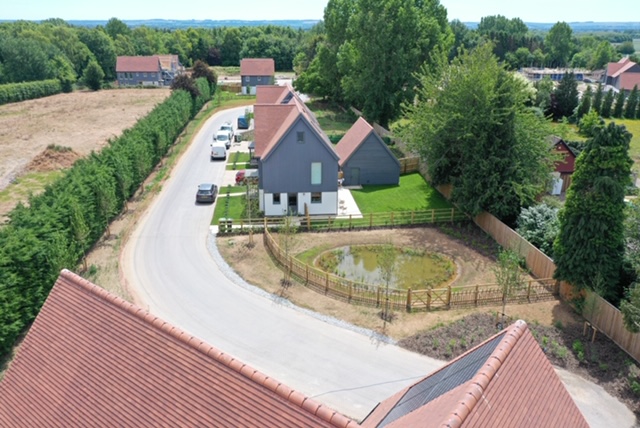
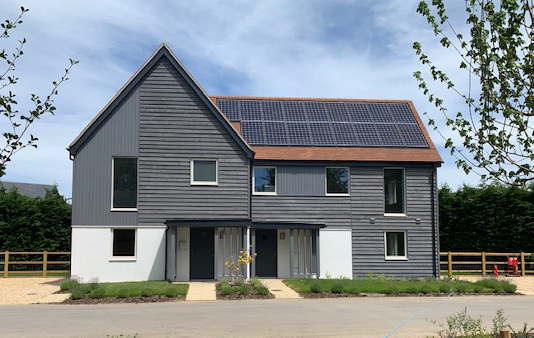
Ssassy’s commitment to green technology underpins its projects, and makes Greencore Construction an excellent partner for its green build method. The UK Green Building Council states that roughly 40% of the UK’s entire carbon footprint comes from the built environment, with half of this stemming from energy used in buildings and infrastructure, such as roads and railways.
This makes it imperative that new homes should embrace greener methods, that contribute less both during the construction and usage of the building. Check out its guide to climate change in relation to new building and review the carbon impact of the decisions you make on your own project.
Springfield Meadow’s green credentials earned it One Planet Living Global Leader status by Bioregional, who stated:
“The use of an innovative construction system using natural materials like hemp will create an approximately 90% reduction in carbon emissions due to construction compared to a standard home in the UK of a similar size.”
Ian Pritchett, Managing Director of Greencore, explains the build system. “The timber frame building system is insulated with Lime-Hemp and natural fibre insulation. These natural materials absorb carbon dioxide during growth.
“We also build using the Passivhaus principles to reduce energy use, while integrated solar panels in the roof supply as much energy as the homes requires over the course of a year. To complement this, we incorporate nature as much as possible through working with the Wildlife Trust, provide an electric car club and generally support the new community to live as sustainably as possible.”
Land promoter Leaper Land has submitted an outline planning application for a 65-plot site on the edge of the village of Child Okeford. Routes to home ownership at Child Okeford include self-build, custom-build and custom-choice, with the custom-choice built to a shell stage, at which point it is handed over to the purchaser.
Routes to ownership at Child Okeford:
Self-build individuals buy a serviced plot, with details of what is allowed to be built set out in a design code and with a palette of materials to choose from. As the design code is pre-approved for planning, permission is guaranteed as long as your build meets the conditions set out in it. Buyers can also choose to project-manage themselves or commission a developer or housebuilder to build the home.
Custom-build with this model, you buy the plot, with the design code setting the context, and contract directly with a developer to build the house. On this scheme, this route offers less of flexibility as there is a choice of designs with pre-prepared layouts and specification options that are approved by planning.
Custom-choice this option involves a developer building your home to the wind-and-watertight structure shell, at which point you take over to commission the remaining jobs. Buyers will pick from a range of interior layouts and specifications.
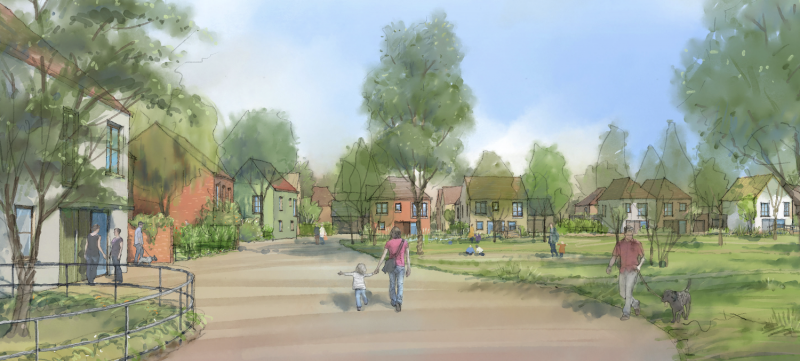
Street view of Child Okeford scheme
While the self and custom build routes offer stamp duty savings and exemption from the Community Infrastructure Levy, custom choice enables people to access regular mortgages and Help to Buy. This extends the site to a greater number of buyers.
The homes are controlled by a design code, which is quite strict as it sets the context for the development, in response to the rural nature of the site. This gives the buyers choice, such as a range of materials, shown below, but by controlling this through a design code it ensure the designs are in keeping with the village.
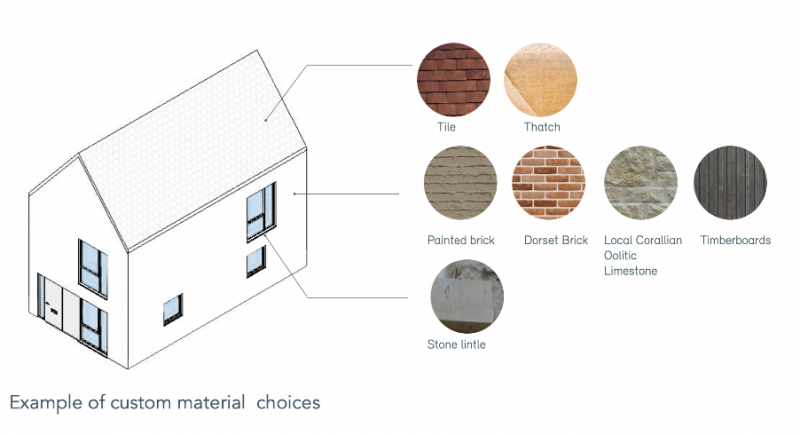
Child Okeford custom build homes – material palette showing choice for exterior materials
“Design codes are really important as they offer reassurance to both the planners and the local community that something of quality will be built. So residents can choose from a palette of materials, for example, all of which could be seen on buildings in the village, helping the scheme at Child Okeford fit in,” said Ben Marten, Director of Leaper Land.
Bringing forwards land for development is costly and time consuming, which is where a land promoter comes in. They act on behalf of the landowner, using their skills and knowledge to secure a planning application.
As such, land promoters can help unlock small parcels of land that otherwise might not come forward. This may be because these sites are too small for big developers to be concerned about, but too costly or time consuming for an unexperienced landowner to bring forward by themselves.
Therefore, they are an ideal solution if you are a farmer or other small landowner who sees potential in their site, but are not sure how to proceed. Typically, their costs are based on results, which makes them a good choice for such landowners.
If you are planning to build, sign up to your local Right to Build register – you can find out the details on the Right to Build Portal.
Once planning is granted they will be in touch with more information and expected times for plots to come to market.
Images: Pollard Thomas Edwards/Leaper Land
Custom Build Homes has released The Furlong, a site of five detached oak-framed homes in the Herefordshire countryside, with plots ranging from £145,000 to £210,000.
The homes at the Furlong are a selection of oak-framed homes with generous living spaces and gardens. The properties all include stand-alone garages and the opportunity to create a home office, a crucial element of modern life in a post-Coronavirus era.
In terms of customisation, buyers have the opportunity to feed into the internal design of their new home. Consequently, people the flexibility of designing a layout to suit their lifestyle, both now and in the future.
The development is brought to market by custom build enabler, Custom Build Homes, together with support from specialist oak frame T.J. Crump Oakwrights’ and award-winning A1-rated building contractor G.P. Thomas Construction.
As a custom build enabler, Custom Build Homes is bringing on new places where people can design and create their own homes, such as these customisable homes.
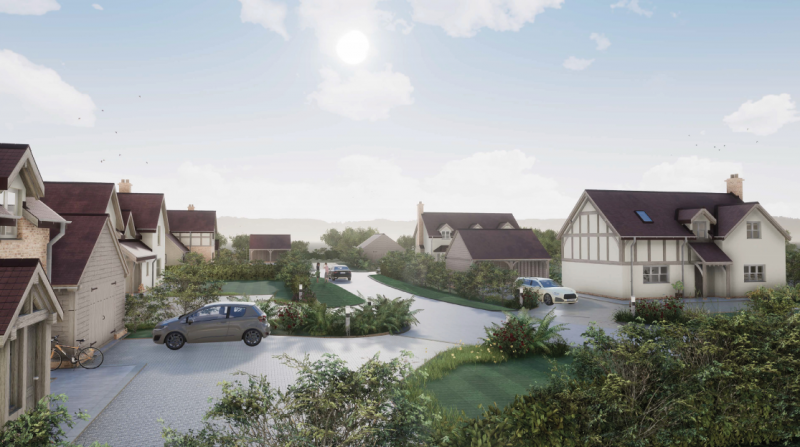
The development of three- to five-bedroom homes is on the southern edge of the Mortimer Forest, with easy access to the countryside, as well as the towns of Leominster and Ludlow.
Ryan Blair, Sales Director at Custom Build Homes, said: “With our housing stock under the spotlight after a period of lockdown, never has it been more important to listen to what people need from their homes and deliver new opportunities that respond to those needs.
“This development will enable us to support new homeowners to live better by design and we are looking forward to supporting them throughout their custom build journey.”
The team behind Homebuilding & Renovating has launched a Virtual Summer Event on the 24 to 25 July, bringing you the best bits from a self build and homes show, but from the safety of your home.
Just because live events and shows are currently on hold due to the Coronavirus crisis, it doesn’t mean that you have to put your project on hold. With the Homebuilding & Renovating Virtual Summer Show everything you need for your home project is just a click away.
Homebuilding and Renovating has taken the decision to transfer everything that people know and love about its Homebuilding and Renovating Shows and transfer it to the digital world.
The team has worked to ensure the online event isn’t just a website. Instead, the Virtual Summer Event offers you all the things you would see at a live Homebuilding & Renovating Show.
Visitors can click through and virtually browse what’s available in the auditorium, then select a category of interest to be transported into the virtual exhibition hall, containing all the exhibitor stands within your chosen category.
From there you can take a look around, watch demonstration videos, download brochures, live chat and do all the things you would at a live event, but from the comfort of your own home.
One of the features our visitors love about our events are the informative seminars and masterclasses, they’re always jam packed with people like you finding out information delivered by our expert panel of Builders, Architects, Planners and experienced developers.
The virtual event is no exception, you will be able to attend sessions about planning advice, kitchen and bathroom design, how to find land and much more. We will be bringing you a varied timetable across 4 theatres, where you can join as many sessions as you want, and even dip in and out over the 2 days, plus the content will be available for 4 weeks after the event.
The live show runs for two days, and the platform will stay live with videos and other content for four weeks afterwards, too.
The news that many showrooms and show houses are starting to open up is welcomed, following the closure of so offices and many businesses during the Coronavirus stay-at-home measures.
Across the country a new normal is developing of businesses and sales rooms that are opening, but with new practices to ensure that both staff and visitors stay safe.
We’ve brought you information about some of the first businesses to return to a new normal – but please do let us know if your business is reopening to public visits. Email us on media@nacsba.org.uk

The doors at the NSBRC are set to reopen on the 17 June – along with new measures to ensure visits are safe as well as informative. Plus, following a successful run of online training events, the NSBRC is busy creating a new series of virtual events including training, Ask an Architect consultations, Facebook Live Guided Tours and more.
Visit the website for more information
Bespoke glazing experts Kloeber is reopening all four of its showrooms in Cambridgeshire, West London, Buckinghamshire and West Sussex, with strict procedures in place including additional signage and gel stations. Nothing beats seeing products first hand when it comes to specifying items for your build, and award-winning Kloeber has a wide selection of products in engineered timber, low maintenance aluminium and alu-clad, all offering low U-values, high security and an extensive range of finishes and glass types, including the Funky Front door range (top picture).
Visit the website for details or book an appointment on call 01487 740044.
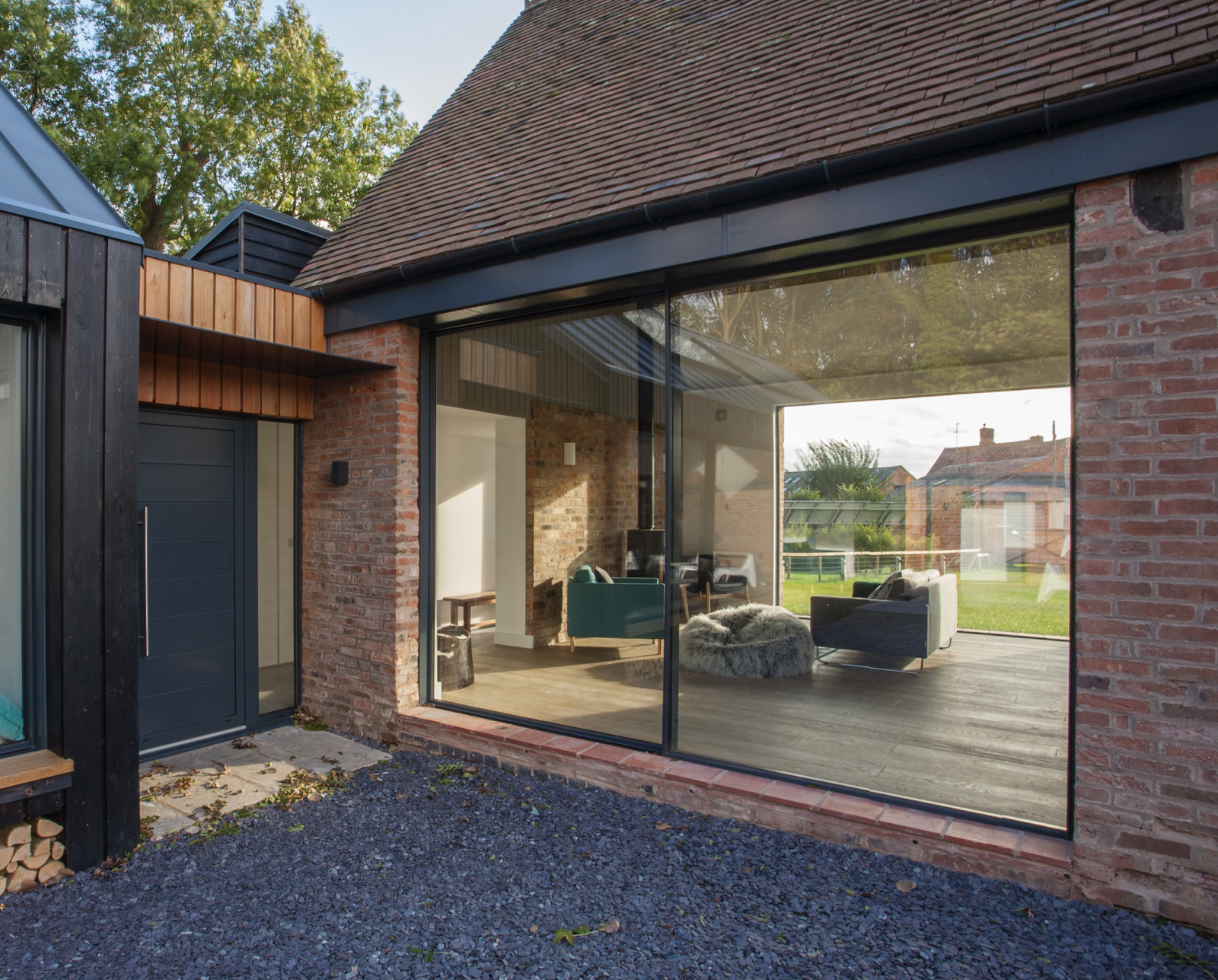

Potton’s five home show village is now officially open once again, on the basis that it is by appointment only on a one-to-one basis, so you will be the only visitors at the time of your appointment. This means you can experience the company’s homes and get ideas for your own project while staying safe. Plus Potton is hosting Facebook Live events: 2nd June ’24 Things to do Before you Start Onsite’ and 9th June 7:30pm, ‘How to Build on a Budget’
Visit the website for details
Although the show house is still not open, Graven Hill has created online walkthroughs of its custom build homes products, including the 2-bed Avon, 4-bed Dorn and the newly launched 3-bed Tove. Check out the walkthroughs here. The Graven Hill site is now officially open for appointments to view houses and plots, by appointment only.
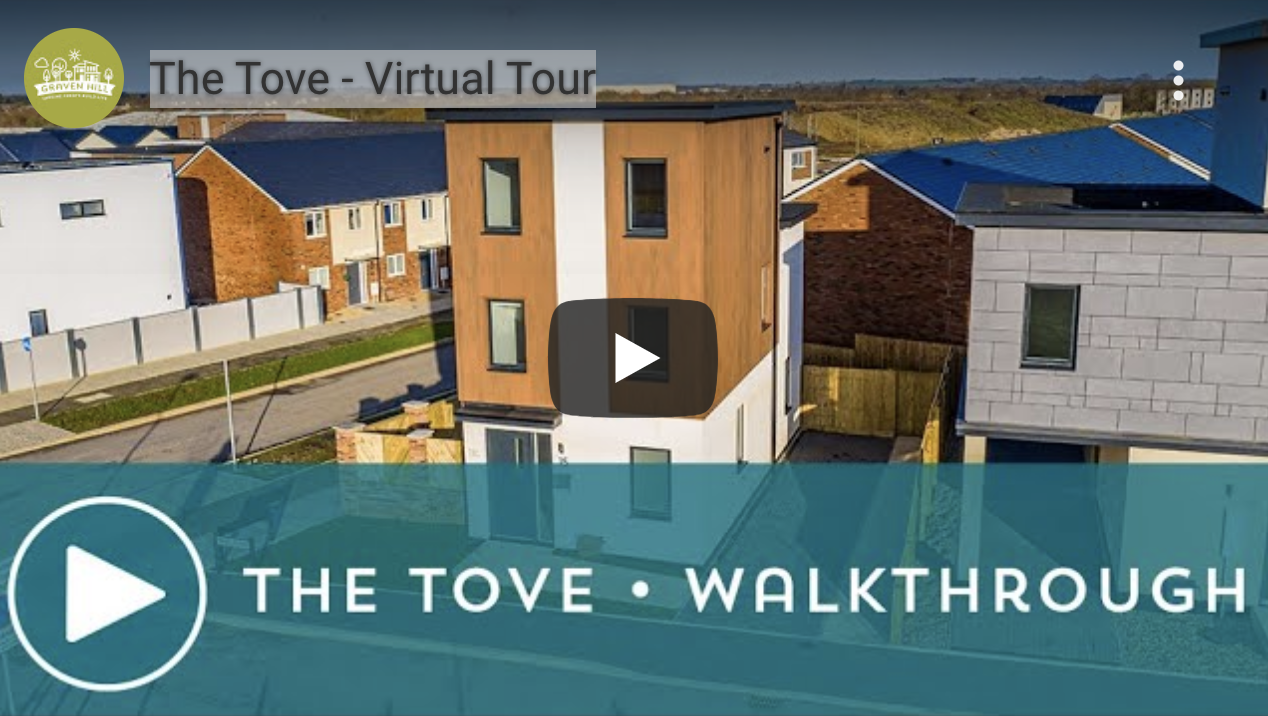
NaCSBA has curated guidance for working safely on site for anyone involved with their own project. Whether you are returning to your site or scaling up the work that has been ongoing throughout, NaCSBA’s guidance for custom and self builders is invaluable.
Whether you are acting as project manager or commissioning a company to build your home, it is worth taking note of the guidance or sharing it with your contractors.
As England begins to ease off of the stay-at-home restrictions, the National Custom and Self Build Association (NaCSBA) has put together the following guidance to assist both individual self builders and companies when undertaking building work.
Government guidance in England never called for building sites to be closed, as Secretary of State for Business, Energy and Industrial Strategy Alok Sharma pointed out in his 31 March letter to the construction industry. However, he acknowledged the need for safe working practices to underpin all decisions with regards to working on site.
In spite of this, many companies and individuals ceased working, either through a desire to stay safe or through an inability to operate during the crisis.
This guide is intended to support self builders and businesses about what practices they should be following to ensure they are operating safely. It is intended as a signposting document to support businesses and individuals in their decisions about how they return to work, and draws extensively on a range of industry knowledge. But ultimately, each site is the responsibility of the owners and/or main contractors.
However, NaCSBA believes that with good practice building activity can and should continue, as it represents a valuable flow of work for the local and wider economy. Custom and self build have a core role in helping the country to return to economic health, supporting Government objectives and providing a crucial supply of new homes.
NaCSBA has published information around planning, and below you will find more information about undertaking work.
In addition, NaCSBA has been providing weekly updates on the sector to Government, reporting barriers for the sector during the crisis. If you have a specific question or would like to share your experiences please email us.
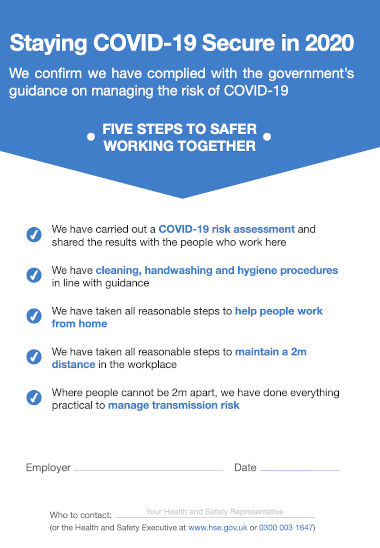
There is plenty of guidance from Government and major industry bodies to advise larger development sites, much of which can be applied to smaller sites as well.
The first point of call for professional support is the Construction Leadership Council which is on Version 3 of its Site Operating Procedures (14 April).
Based on Public Health England advice, this has detailed guidance about keeping workers safe on site, and you can expect it to be regularly updated to reflect the latest Government stance, so check back regularly. This is the leading document for safe on site work.
Government has been working with the House Builders Federation, which has produced a Charter for Safe Working Practice, including a downloadable poster for your site.
BuildUK, a representation organisation for over 40% of the UK construction industry, is also a useful source of information and guidance, with regular updates on the Coronavirus situation.
Small sites are arguably easier to manage than larger sites, purely on the basis that there are fewer people on site, so meeting the 2m safety requirement may be more manageable. Jobs that require teams or several people must be carefully considered to ensure the comply with the Site Operating Procedures guidance.
The Federation of Mater Builders (FMB) has excellent advice, designed for members, but which acts as a useful guide for all practitioners.
Establishing what is safe in terms of work is balancing act, and as an employer you are responsible for the safety of workers and anyone else visiting your site. It is essential that you assess the risk of the work on site, to identify sensible measures to minimise risk. The Health and Safety Executive have interactive tools to help you do this.
Government guidance also includes a series of useful steps:
Advice is clear that you must not be on site if you have any symptoms whatsoever or are, or live with, a vulnerable person, which could be to do with age, pregnancy or an underlying health or clinical condition.
Equally, if you are living with someone who is self isolating you should not be on site. While this means some people will not be able to be on site, it supports the wider working population to operate in a safer environment.
If you are responsible for a site then you must ensure that these rules are followed by all who come onto the site at any time.
If you think you have symptoms, follow NHS advice on Coronavirus.
The Federation of Mater Builders (FMB) has excellent advice around contracts. The situation is unprecedented, and consequently few contracts will have information for dealing with current work scenarios.
The FMB recommends the following:
Check out its guide for detailed information on each of these elements.
The Construction Leadership Council has produced a statement on payment and contracts, which deals with risk around invoking contractual clauses to the detriment of other firms. Construction businesses should still pay according to the original terms.
It is important to acknowledge chains within building projects. Any point in the chain could cause a delay that may mean you are unable meet what you have contractually agreed, whether due to labour or supply chain interruptions.
The situation may impact price, types of materials, deadlines for work, so communication must be open and candid to keep work on track. Ensure any changes are agreed, carefully documented and signed by both parties.
The stay-at-home crisis has changed the way many people work, so check if you can sign digitally for contracts, but always ensure you do your own checks that this is acceptable. Government confirmed that in most cases electronic signatures are acceptable, but the situation gets blurry if a document needs witnessing, so seek legal advice.
As with contracts, you will need to review your scheduling of work and deliveries, to reflect the inevitable interruptions that will typify working for the rest of the year. This is crucial on a self build, where jobs are often sequential, and there aren’t other properties that trades can work on.
This applies to the hire or purchase of equipment, so be certain you have the tools you need to do the job well in advance of them being needed. Users of any plant or equipment should wash their hands properly before and after using any tools, as per Government guidance.
Another crucial component for scheduling, materials are typically ordered to correspond with jobs, but this may not be practical due to gaps in the delivery and supply chain. Planning permissions may stipulate materials, so alternatives can not necessarily be swapped in – check the conditions attached to your project.
Materials are a commodity that attract theft and may be damaged, so if you are ordering ahead ensure you have a secure space for storage, and check the situation with your insurance around storing on site.
The National Business Crime Centre has helpful advice for securing professional sites, and many of the principles also apply to smaller sites.
The Construction Products Association (CPA) has advice for anyone operating in manufacturing, some of which is of relevance for the construction industry.
Most manufacturers have detailed websites showcasing their products, as well as case studies illustrating the use of materials. Equally, if you call companies when choosing materials they may be able to post out samples or direct you to other online examples of their materials, such as Instagram or magazine features.
If you stopped work you should have notified your liability insurers, and equally with returning to site it is imperative that you speak to your liability and professional indemnity insurers to check that cover is in place and appropriate.
When onsite inspections resume, ensure that any changed timelines that might affect appointments are shared.
Whether development finance or mortgage finance, check in with your lender to see if the financial circumstance in relation to you or your build have changed.
Mortgage lending has carried on throughout the crisis to date, but circumstances such as valuations and furloughed salaries may have an impact on some new lending agreements. Always check with your lender, broker or financial specialist, and ensure they have experience of custom and self build. The unwillingness of some parties to do site visits during the crisis has acted as a limiting factor on some activity, but NaCSBA believes such visits can be undertaken within best practice guidance or alternative remote approaches adopted.
The inability to do site visits during the crisis acted as a limiting factor on some activity, but with a return to work the backlog should start to get processed.
Small companies may also be eligible from the new 100% Government-backed scheme that offers ‘bounce back’ loans, of between £2,000 to £50,000 to get companies operating again.
You should update your work practices and update your processes for Health and Safety to follow the latest Health and Safety Executive and Site Operating Procedures (always check this is the latest version).
A clean and tidy site will reduce the risk of accidents, as hospital visits following an accident are a risk in themselves. However, if an accident does occur hospitals should not be avoided because of the risk if the injury is serious enough to warrant a visit.
You should conduct your own risk assessment and be sure that you are meeting the expectations for safe operation. If you are the site owner or as the main contractor the responsibility will sit with you for the safety of anyone on site, whether employees, visitors or family members. Limit all but necessary visits to site, too.
Safe distancing: Advice remains that workers (who are not from the same household) should maintain a two-metre distance, and where possible PPE should be worn. Any jobs that make this impossible, such as awkward lifting, should be carefully planned to minimise time for close working, and workers should be wearing PPE as a precaution. Safe distancing around deliveries should also be practised as standard.
PPE: The FMB has raised the issue around the lack of PPE for onsite work, and without it some jobs may not be able to be completed. Again, risk assessments for such jobs should be undertaken and the work delayed if it cannot be carried out safely without PPE.
Travel: Teams of workers should not be sharing transport (unless they are in the same household), with workers arriving independently and avoiding public transport where possible. The latest guide for returning to work, Our Plan to Rebuild, released 11 May, sets out the requirement to wear face coverings on public transport.
Staggered timings: Given the longer days, measures that can support safe working include staggered start times, lunches and breaks, with – where practical, multiple kitchen and toilet facilities. There should ideally be several washing points fully supplied with appropriate cleaning and sanitisers.
Government also announced that builders could agree more flexible site working hours with the local council to support the staggering of workers on site.
Set expectations: You should establish with your workforce in advance how this will work in practice on your site. The FMB recommends daily briefings (that reflect safe distance measures) with expectations around new work processes and practices. It may help to share this PDF guide.
A zero tolerance approach to lax behaviour should be practised, with a process put in place for notification of breaches and also for any workers starting to develop symptoms, with record keeping in place.
Cleaning: Hotspots should be regularly disinfected, with a person appointed to do this job and a log of cleaning. These include entry points, handles, equipment handles and controls, ladders, taps and toilets. Tools should not be shared and should be sanitised after use.
Clothing: clothing should be washed after use, ideally loaded directly into the washing machine by the user, if possible.
Shared equipment: tablets, devices, plans and anything that is shared represents a transmission risk and should be avoided.
The Coronavirus is a rich opportunity for scammers operating cyber crime and phishing scams, with worried people clicking on links to ensure they get the correct information.
As with all cyber crime, think before opening emails or attachments from unusual sources or addresses that don’t quite look right. If it is from your bank or another professional organisation and looks suspicious check its safe – by looking on the relevant website rather than following links.
The National Cyber Security Centre has advice on avoiding Phishing and other email scams and also on malware and ransomware attacks.
Other good sources of advice are the National Crime Agency and police forces, such as the Metropolitan Police.
If anyone develops symptoms you must follow protocol and ensure that work is stopped, safely, and secured. You must report anyone that develops symptoms at work to the HSE under RIDDOR, using the online guidance. A risk assessment should then be completed about the situation on site, and any workers isolating should follow guidelines.
Keep a log of all activity, including securely handled tracing information, and ensure that any consequences of delaying or halting work are relayed along the chain to all involved.
The Government in England has a 5-pillar strategy for coronavirus testing, that includes testing people who have coronavirus-like symptoms to assess whether or not they currently have the virus (so not an antibody test to see if they have had it). Construction workers are now included among the groups eligible for testing, to support the return to work.
In most cases with a self build or custom build, the owner and their family will not be in residence on site. However, if this not the case the Government has detailed guidance for precautions you should take for carrying out work inside people’s homes.
This is most likely to apply if homeowners in temporary accommodation on site look to move into a property before all work is completed, but all insurances should be checked before owners consider this as an option, and current Government advice remains for people not to move house if they can avoid it.
Yes, most are still operating planning services, but individual arrangements are in place for contact, either by phone, email or email for a call back. New legislation in England temporarily allows councils to hold committee meetings remotely, with the public able to access them remotely. Check the situation with regards to your authority’s attitude to site visits for planning and building control.
Check the latest status, but Scotland passed emergency legislation Scottish Parliament, with the Coronavirus (Scotland) Bill. At the 6 May, all construction work apart from that deemed essential remains halted in Scotland, meaning there are no measures at time of writing for a phased return.
Planning, and many other areas, is devolved and Scotland is taking measures that echo those in the rest of the UK, but which are different. With regards to planning, Scotland’s Chief Planner published a Covid-19 update letter at the start of April and Scottish Government also has guidance for the construction industry. This differs from England as all non-essential construction work has ceased.
RTPI Scotland welcomed the legislation, especially as it means that planning permissions due to lapse in the emergency period will be extended.
Scottish Government has also announced an emergency loan fund for SME housebuilders of up to £1million to support them through Coronavirus crisis.
Wales has also issued guidance to planning authorities for the crisis, as well as guidance for housing and emergency permitted development rights.
In addition, it has released advice about maintaining physical distancing measures in the workplace as a core element in safe working, which can be enforced through fines. It also has an SME business support fund.
Northern Ireland’s Chief Planner also issued a letter with guidance, and PACWAC, the Planning Appeals Commission reopened its office with effect from the 11 May. The Health & Safety Executive for Northern Ireland (HSENI) has a useful blank risk assessment template that can be used to support decisions about returning to work.
The Irish Department of Housing, Planning and Local Government has created its own series of guidance and information for work practice during the crisis.
Government announced on 13 May that people could, once again, move house, provided they followed guidance on keeping safe. The announcement means that limited viewings can once again be conducted, although virtual sales are to be encouraged. Guidance includes advice for the various professions working in and servicing homes sales.
Importantly, the guidance also states: “It also applies to custom and self builders looking to acquire a plot or a property to renovate or to demolish.” Specifically, it also confirms that surveyors can visit plots to undertake valuations to support the release of stage payment mortgages, and also that inspectors can carry out warranty assessments, including for custom and self builds.
Many companies have retained some elements of their work online, so check with a company you are planning to work with. Services such as architects and package companies are often able to do online consultations, and may be able to do work on planning your project, design and pricing work without a face to face or site visit.
The National Self Build and Renovation Centre has responded to the stay-at-home measures proactively by offering a suite of online courses, ensuring that Covid-19 doesn’t halt prospective self-builders’ ambitions to hone their skills and knowledge. The new programme of online content will help anyone with a project to keep their homebuilding project on track.
Katy Hardwick, NSBRC Course Coordinator said, “I am delighted to announce that we will be adding to our online offerings by launching the first of our Virtual Courses in May. We feel this is a great step forward and are pleased to help you research and plan for your projects whilst at home.”
This course is essential for anyone considering their first self build, home improvement, loft conversion or renovation project. Covering everything from budgeting, insurance and site management through to health & safety, snagging and VAT reclaim.
Delivered on Zoom, over three 2 hour modules, this online course is delivered by experienced Project Manager, Charlie Laing. Charlie has presented NSBRC courses for several years and is Director at CLPM Ltd, a specialist project management business.
Course cost: £59pp
Date: starts Wednesday 13th May.
Our Renovation Course is delivered by NSBRC Helpdesk Expert, David Hilton. David is an authority in sustainable building and energy efficiency, with extensive knowledge in building fabrics and heating systems.
As part of the course, David will also guide you through the NSBRC’s own fantastic Renovation House where you can watch the theory come to life.
Delivered on Zoom, over three 2 hour modules, this online course is delivered by experienced expert, David Hilton. David has been involved at the NSBRC for many years and also presents our Eco Workshops and the NSBRC Guide to Heating Your Home.
Course cost: £59pp
Date: starts Thursday 14th May
This Course has been designed specifically for Self Builders and Home Renovators and explores the latest options in heat and energy sources, both renewable and conventional systems.
Our Heating Your Home Course is delivered by NSBRC Helpdesk Expert, David Hilton. David is an authority in sustainable building and energy efficiency, with extensive knowledge in building fabrics and heating systems.
As part of the course, David will also guide you through the NSBRC’s ‘Plant Room’ within our fantastic Renovation House where you can watch the theory come to life.
Delivered on Zoom, over three 2 hour modules, this online course is delivered by experienced expert, David Hilton. David has been involved at the NSBRC for many years and also presents our Eco Workshops and the NSBRC Guide to Renovation Projects.
Course cost: £59pp
Date: starts Friday 22nd May.
If you have any of these issues, then you may be interested in our online ‘Ask an Architect’ sessions. Working with The Royal Institute of British Architects (RIBA) we are offering a free personal consultation with an architect to discuss ideas for designing and building your own home, or renovating or reconfiguring your existing home, in a no-obligation 25-minute virtual meeting.
Meetings will take place using Zoom and we will arrange everything for you.
Bookings MUST be made in advance. Please contact Deanah with your contact details to secure your personal consultation:
Course cost: Free
Date: Saturday 16th May
The Passivhaus standard is designed to deliver comfort, quality and lower running costs, in any type of building. We spend most of our time indoors, so buildings play an important part in our health and wellbeing.
The most successful and cost-effective way of achieving Passivhaus is by incorporating the standard before your designs are complete. It’s also useful if the Passivhaus elements are included in your planning application.
Take advantage of this free workshop and ensure you have the right team behind you for your Passivhaus home.
This ‘virtual’ workshop will offer a full timetable of talks & webinars, question time sessions and live guided tours from the NSBRC across various platforms.
Workshop Highlights:
Course cost: Free
Date: ‘Virtual’ Event – Fri. 15th & Sat. 16th May
To further support users, the NSBRC has set up a ‘virtual enquiry’ service, where you can request information from centre exhibitors from the comfort of your home.
We’ve launched our new offering. Simply provide a few details, choose the companies you want to hear from, and we’ll pass your enquiry directly to our exhibiting partners.
Our exhibitors are listed by segmentation. Just click on the + sign to expand each group, letting you view all of our exhibitors who can help with that particular area.
Follow the simple 3-step process:
Alternatively, you can also visit our exhibitors individual profile pages to find out more information about them, and fill in the ‘quick enquiry’ form to request information from that specific business.
The Government recently announced it would be creating a new Homes Ombudsman that requires all developers to be party to the scheme, giving a route to redress for home buyers should their new property fall short of expectations of feature shoddy work. The National Custom and Self Build Association (NaCSBA) fed into the consultation back in August 2019 to press the case for self builders.
In line with NaCSBA’s submission, the consultation confirmed that the scope of the New Homes Ombudsman will not include self-builders “unless they plan to sell the property to someone else within a set period”.
NaCSBA is supportive of this approach, but confirms that the ‘period’ referred to will need qualifying. Self building with the intent to sell has other consequences, such as the Community Infrastructure Levy (CIL) exemption, and puts self build in to a separate category, making it more akin to speculative building.
The confirmation is helpful, as a self build typically involves large numbers of suppliers of services, skills and resources, and the co-ordination of these elements into a new home, which makes them a poor fit for the Ombudsman scheme.
NaCSBA recommends self builders choose from its members when sourcing contractors and businesses for work, as its own Code of Practice offers a route to dispute resolution should a consumer have issues with a contractor. All NaCSBA members (apart form Not for Profit members, such as councils) must sign up to the scheme as a condition of membership. Equally, self builders should look out for members of other trade associations, such as the Federation of Master Builders or the Structural Timber Association also offers surety that firms are reputable operators in the self build sector.
While the exemption for self build is clear, the situation around custom build homes needs further clarification. NaCSBA highlighted this in its response to the consultation, where it concluded that, given the relative scale of the sector and the challenges of separating self-build and custom build, the best approach was to use the current legal definition. This covers both self and custom build and, on this basis, custom build should also be exempt.
NaCSBA will be seeking clarity around this, as it is unclear where the options for some custom build schemes, as each one is slightly different.
The new Homes Ombudsman will be able to hold developers to account and require them to put matters right in the case of a complaint, and it can even prevent developers from trading in the future if they fail to meet the expected standards.
The Daily Telegraph Homebuilding & Renovating Awards 2020 are now open to applications from all self builds, renovations, conversions or extensions. The awards celebrate some of the best homes of the last year, both designs and the spirit and ambition of the homeowners – a positive message in the current climate of bad news.
So if you’re self isolating in your new home, why not take the time to enter the awards and showcase all your hard work! There are 10 categories to consider, with one of the winners being chosen as the Home of the Year, as shown on TV, with the homeowner grabbing a prize of £1,000 of John Lewis vouchers.
Best Contemporary-Style Self Build — sponsored by Potton
Best Traditional-Style Self Build
Best Extension — sponsored by IDSystems
Best Renovation
Best Conversion
Best Sustainable Home — sponsored by Icynene
Best Value Home
Spirit of Self Build — sponsored by Sips Eco
Readers’ Choice Award — sponsored by Selfbuild & Contract Floors
Best Interior
Plus Home of the Future — sponsored by ecoHaus
Find out more and what you need to do to enter, including the application form on Homebuilding & Renovating’s website.
Credit: Homebuilding & Renovating/Simon Maxwell